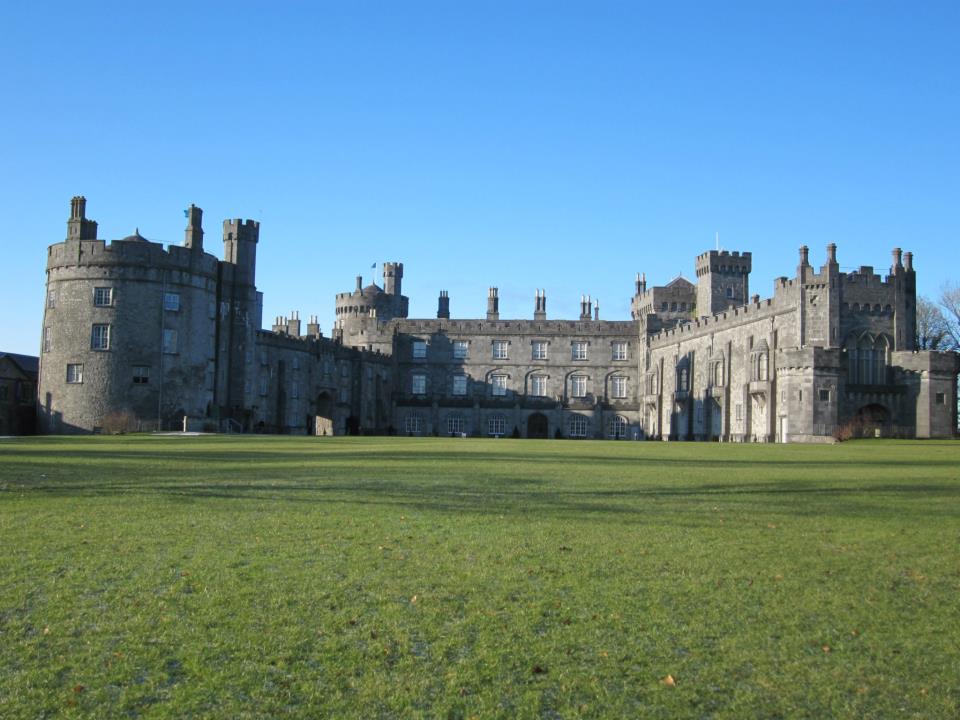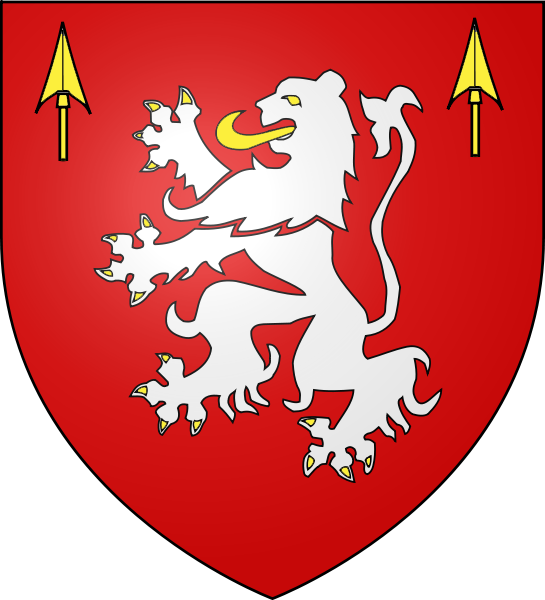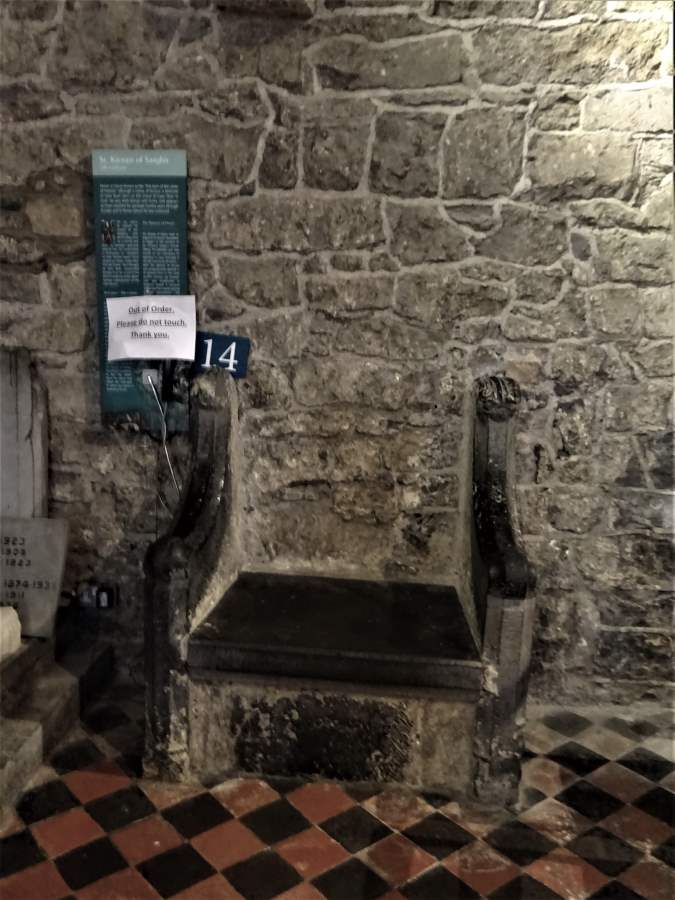|
Battle Of Thomond
The Battle of Thomond ( ga, Áth an Urchair) was fought in Ireland on 14 July 1328 between the forces of William de Burgh and an army led by Brian Bán Ó Briain, Lord of Thomond. It was fought near Thurles in modern County Tipperary and featured powerful Gaelic and Anglo-Irish figures on both sides. Background The Battle of Thomond was largely the culmination of power struggles in Northern Munster in the 1320s and in-fighting within both the Gaelic Irish and Hiberno-Norman dynasties. An ongoing conflict between Brian Bán Ó Briain and his cousin Muircheartach Ó Briain over the rulership of the Kingdom of Thomond had seen them fight on opposing sides at the Battle of Dysert O'Dea in 1318. A year earlier, Muirchertach's brother Diarmait had killed Brian Bán's brother Donnchad near Corcomroe Abbey, County Clare. In 1322, Brian Bán attacked and burned the English fortress of Atthassol on the River Suir. This had been in response to increased encroachment on his lands in T ... [...More Info...] [...Related Items...] OR: [Wikipedia] [Google] [Baidu] |
Thurles
Thurles (; ''Durlas Éile'') is a town in County Tipperary, Ireland. It is located in the civil parish of the same name in the barony of Eliogarty and in the ecclesiastical parish of Thurles. The cathedral church of the Roman Catholic Archdiocese of Cashel and Emly is located in the town. Location and access Thurles is located in mid-County Tipperary and is surrounded by the Silvermine Mountains (to the northwest) and the Slieveardagh Hills (to the southeast). The town itself is built on a crossing of the River Suir. The M8 motorway connects Thurles to Cork and Dublin via the N75 and N62 roads. The N62 also connects Thurles to the centre of Ireland (Athlone) via Templemore and Roscrea. The R498 links Thurles to Nenagh. Thurles railway station opened on 13 March 1848. History Ancient history The ancient territory of Éile obtained its name from pre-historic inhabitants called the Eli, about whom little is known beyond what may be gathered from legends and traditions. Th ... [...More Info...] [...Related Items...] OR: [Wikipedia] [Google] [Baidu] |
Kilkenny
Kilkenny (). is a city in County Kilkenny, Ireland. It is located in the South-East Region and in the province of Leinster. It is built on both banks of the River Nore. The 2016 census gave the total population of Kilkenny as 26,512. Kilkenny is a tourist destination, and its environs include historic buildings such as Kilkenny Castle, St Canice's Cathedral and round tower, Rothe House, Shee Alms House, Black Abbey, St. Mary's Cathedral, Kilkenny Town Hall, St. Francis Abbey, Grace's Castle, and St. John's Priory. Kilkenny is also known for its craft and design workshops, the Watergate Theatre, public gardens and museums. Annual events include Kilkenny Arts Festival, the Cat Laughs comedy festival and music at the Kilkenny Roots Festival. Kilkenny began with an early 6th-century ecclesiastical foundation within the Kingdom of Ossory. Following the Norman invasion of Ireland, Kilkenny Castle and a series of walls were built to protect the burghers of what became ... [...More Info...] [...Related Items...] OR: [Wikipedia] [Google] [Baidu] |
1328 In Ireland
Events from the year 1328 in Ireland. Incumbent *Lord: Edward III Edward III (13 November 1312 – 21 June 1377), also known as Edward of Windsor before his accession, was King of England and Lord of Ireland from January 1327 until his death in 1377. He is noted for his military success and for restoring r ... Births Deaths * Muiris Ó Gibealláin, Irish jurist, singer, philosopher, poet, and musician {{Years in Ireland, 1328 ... [...More Info...] [...Related Items...] OR: [Wikipedia] [Google] [Baidu] |
Conflicts In 1328
Conflict may refer to: Arts, entertainment, and media Films * ''Conflict'' (1921 film), an American silent film directed by Stuart Paton * ''Conflict'' (1936 film), an American boxing film starring John Wayne * ''Conflict'' (1937 film), a Swedish drama film directed by Per-Axel Branner * ''Conflict'' (1938 film), a French drama film directed by Léonide Moguy * ''Conflict'' (1945 film), an American suspense film starring Humphrey Bogart * ''Catholics: A Fable'' (1973 film), or ''The Conflict'', a film starring Martin Sheen * ''Judith'' (1966 film) or ''Conflict'', a film starring Sophia Loren * ''Samar'' (1999 film) or ''Conflict'', a 1999 Indian film by Shyam Benegal Games * ''Conflict'' (series), a 2002–2008 series of war games for the PS2, Xbox, and PC * ''Conflict'' (video game), a 1989 Nintendo Entertainment System war game * '' Conflict: Middle East Political Simulator'', a 1990 strategy computer game Literature and periodicals * ''Conflict'' (novel ... [...More Info...] [...Related Items...] OR: [Wikipedia] [Google] [Baidu] |
Burke Civil War
The Burke/de Burgh Civil War was a conflict in Ireland from 1333 to 1338 between three leading members of the de Burgh (Burke/ Bourke) Anglo-Norman family resulting in the division into three clans. Background Twenty-year-old William Donn de Burgh, 3rd Earl of Ulster, known as "the Brown Earl", was murdered by his household knights in June 1333 after he had starved to death his cousin and rival Sir Walter Liath de Burgh in the previous year (1332). The Earl's only child, Elizabeth de Burgh (1332–1363), succeeded as Countess of Ulster and legal heir to the de Burgh estates as an infant. For safety, as an infant and a female heiress, she was taken by her mother to England as her lordships collapsed in a power struggle. Three members of the de Burgh family fought against each other in an attempt to preserve their own personal estates, and hold overall control of the massive de Burgh inheritance in Ireland. They were: * Sir Edmond de Burgh of Castleconnell (only surviving ... [...More Info...] [...Related Items...] OR: [Wikipedia] [Google] [Baidu] |
O'Conor
The O'Conor family ( Middle Irish: ''Ó Conchubhair''; Modern ga, Ó Conchúir) are an Irish noble house and were one of the most influential and distinguished royal houses in Ireland. The O'Conor family held the throne of the Kingdom of Connacht up until 1475. Having ruled it on and off since 967, they ruled continuously from 1102 to 1475. Moreover, the O'Conor parent house the Uí Briúin and Síol Muireadaigh ruled Connacht on many occasions – but not continuously – between 482 and 956. The house of O'Conor also produced two High Kings of Ireland, Tairrdelbach Ua Conchobair and his son Ruaidrí Ua Conchobair, the last High King of Ireland. The family seat is Clonalis House outside Castlerea in County Roscommon. The current O'Conor Don is Desmond O'Conor (b. 22 September 1938) who lives in Rotherfield, East Sussex in England. History The Ó Conor ''Don'' is the head of a lineage which provided about one hundred Kings of Connacht, thirty Chiefs of the Name and ... [...More Info...] [...Related Items...] OR: [Wikipedia] [Google] [Baidu] |
MacNamara
Mac Conmara (anglicised as MacNamara or McNamara) is an Irish surname of a family of County Clare in Ireland. The McNamara family were an Irish clan claiming descent from the Dál gCais and, after the O'Briens, one of the most powerful families in the Kingdom of Thomond as Lords of Clancullen (a title later divided into East and West families). They are related to the O'Gradys, also descended from the Uí Caisin line of the Dál gCais. The name began with the chieftain Cumara, of Maghadhair in county Clare. Cumara is a contracted form of Conmara – hound of the sea. His son, Domhnall, who died in 1099, adopted the surname Mac Conmara, or son of Cumara, thus becoming the first of his name. The name has survived relatively unmodified as MacConmara in Irish and anglicised as MacNamara/McNamara. Naming conventions The name is a contraction of "Mac Cú Na Mara" meaning "Son of the Hound of the Sea". The name has wide varieties of pronunciations, the most popular being that ... [...More Info...] [...Related Items...] OR: [Wikipedia] [Google] [Baidu] |
O'Brien Clan
The O'Brien dynasty ( ga, label=Classical Irish, Ua Briain; ga, label=Modern Irish, Ó Briain ; genitive ''Uí Bhriain'' ) is a noble house of Munster, founded in the 10th century by Brian Boru of the Dál gCais (Dalcassians). After becoming King of Munster, through conquest he established himself as ''Ard Rí na hÉireann'' (High King of Ireland). Brian's descendants thus carried the name Ó Briain, continuing to rule the Kingdom of Munster until the 12th century where their territory had shrunk to the Kingdom of Thomond which they would hold for just under five centuries. In total, four Ó Briains ruled in Munster, and two held the High Kingship of Ireland (with opposition). After the partition of Munster into Thomond and the MacCarthy Kingdom of Desmond by Tairrdelbach Ua Conchobair in the 12th century, the dynasty would go on to provide around thirty monarchs of Thomond until 1542. During part of this period in the late 13th century they had a rivalry with the Norman de C ... [...More Info...] [...Related Items...] OR: [Wikipedia] [Google] [Baidu] |
King Of Ireland
King is the title given to a male monarch in a variety of contexts. The female equivalent is queen, which title is also given to the consort of a king. *In the context of prehistory, antiquity and contemporary indigenous peoples, the title may refer to tribal kingship. Germanic kingship is cognate with Indo-European traditions of tribal rulership (c.f. Indic '' rājan'', Gothic '' reiks'', and Old Irish '' rí'', etc.). *In the context of classical antiquity, king may translate in Latin as '' rex'' and in Greek as ''archon'' or ''basileus''. *In classical European feudalism, the title of ''king'' as the ruler of a ''kingdom'' is understood to be the highest rank in the feudal order, potentially subject, at least nominally, only to an emperor (harking back to the client kings of the Roman Republic and Roman Empire). *In a modern context, the title may refer to the ruler of one of a number of modern monarchies (either absolute or constitutional). The title of ''king ... [...More Info...] [...Related Items...] OR: [Wikipedia] [Google] [Baidu] |
Edward II Of England
Edward II (25 April 1284 – 21 September 1327), also called Edward of Caernarfon, was King of England and Lord of Ireland from 1307 until he was deposed in January 1327. The fourth son of Edward I, Edward became the heir apparent to the throne following the death of his elder brother Alphonso. Beginning in 1300, Edward accompanied his father on invasions of Scotland. In 1306, he was knighted in a grand ceremony at Westminster Abbey. Following his father's death, Edward succeeded to the throne in 1307. He married Isabella, the daughter of the powerful King Philip IV of France, in 1308, as part of a long-running effort to resolve tensions between the English and French crowns. Edward had a close and controversial relationship with Piers Gaveston, who had joined his household in 1300. The precise nature of their relationship is uncertain; they may have been friends, lovers, or sworn brothers. Edward's relationship with Gaveston inspired Christopher Marlowe's ... [...More Info...] [...Related Items...] OR: [Wikipedia] [Google] [Baidu] |
Bishop Of Ossory
The Bishop of Ossory () is an episcopal title which takes its name after the ancient of Kingdom of Ossory in the Province of Leinster, Ireland. In the Roman Catholic Church it remains a separate title, but in the Church of Ireland it has been united with other bishoprics. History The diocese of Ossory was one of the twenty-four dioceses established at the Synod of Rathbreasail in 1111 and coincided with the ancient Kingdom of Ossory (Osraige); this is unusual, as Christian dioceses are almost always named for cities, not for regions. The episcopal see has always been in Kilkenny, the capital of Ossory at the time of the Synod of Rathbreasail. The erroneous belief that the cathedral was originally further north at Aghaboe is traced by John Bradley to a 16th-century misinterpretation of a 13th-century property transfer, combined with the fact that the abbey at the site which became St Canice's Cathedral, Kilkenny, was a daughter house of Aghaboe Abbey. Following the Refor ... [...More Info...] [...Related Items...] OR: [Wikipedia] [Google] [Baidu] |
Richard De Ledrede
Richard de Ledrede (died 1360/1361), also known as Richard Ledred, was a 14th-century churchman in Ireland who served as Bishop of Ossory. His long tenure as Bishop was marked by bitter controversies and repeated quarrels with his colleagues, both lay and clerical. Life Richard was probably born between about 1260 and 1270. A report of c.1356 that he was by that date a centenarian is believed to be an exaggeration, although he was certainly so advanced in years that his fitness to perform his duties was questioned.Neary 1984, p. 273. His name is thought to relate to Leatherhead in Surrey, England, but this may be misleading: other evidence suggests a family connection with the county of Somerset. A Franciscan of the Order of Friars Minor, he served as Bishop of Ossory from May 1317 until his death in 1360/1361. Kilkenny witch trials Ledrede was known as a "scourge of heresy and witchcraft", and was a central figure in the Kilkenny witch trials of 1324, when among the acc ... [...More Info...] [...Related Items...] OR: [Wikipedia] [Google] [Baidu] |





